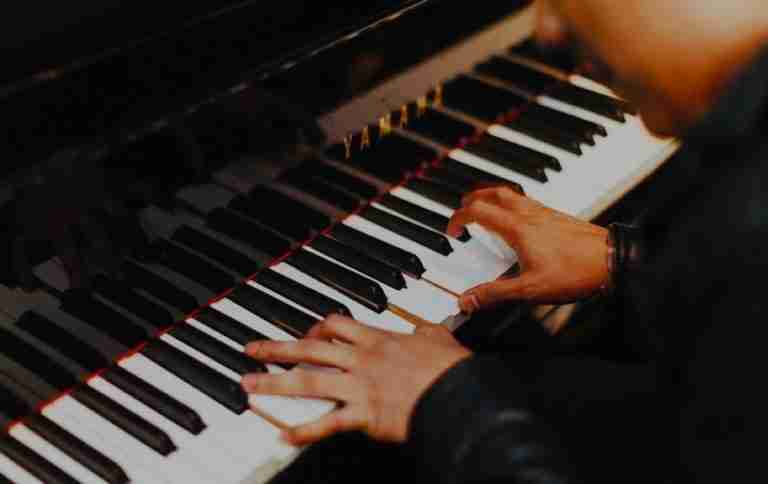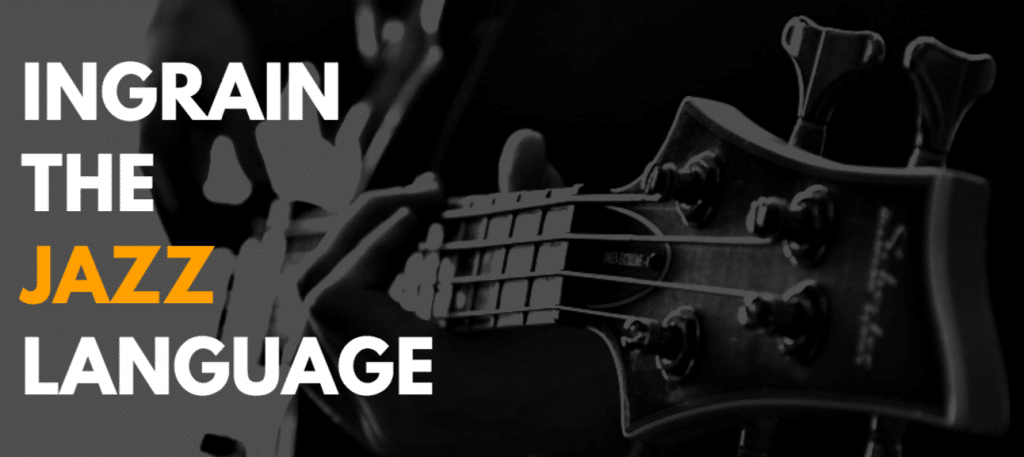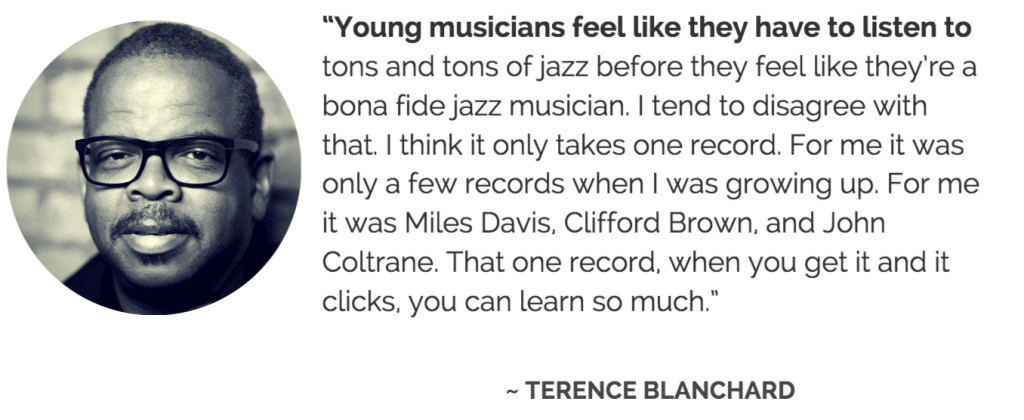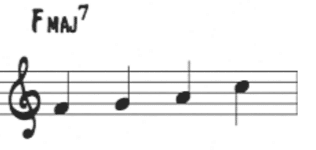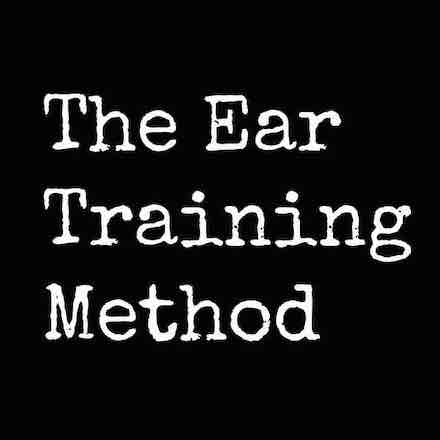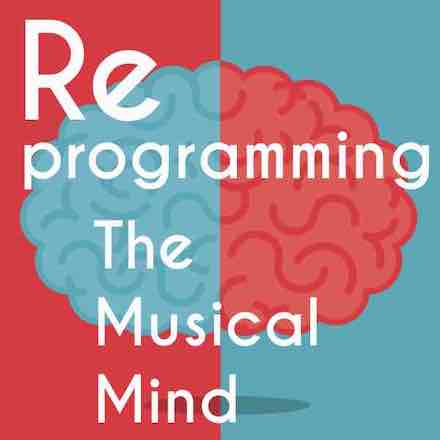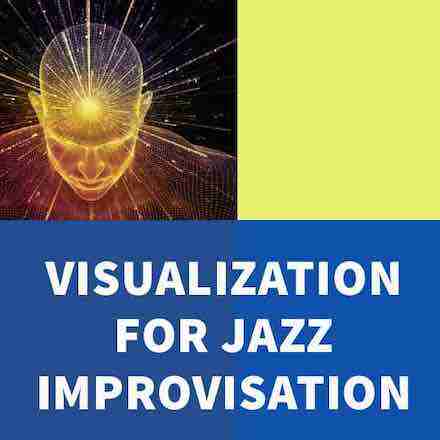You’ve been thinking about it all day. As you ate breakfast. On your commute to work. And while you were sitting at your desk watching the seconds tick by. You need to practice. You need to start making progress and achieving your musical goals. And you need to do it right now!
But before you jump right into an hour long practice session there is something that you should know. Something that can make your practice much more effective…
Time to stretch your musical muscles
We’re talking about warming up.
Sure, we all practice certain exercises to polish our technique and improve our sound – a few minutes spent running through scales, etudes and long tones…
But what about a warm-up for the art of jazz improvisation?
A way to get the creative juices flowing. A process for getting your mind and body limbered up for the demands of an improvised solo.
Think about it. Wouldn’t it be great to jump into a solo at your creative peak….without the struggle of not having any ideas.
Below we’ve collected some of the best warm-up exercises we know that’ll make a difference in the way you approach improvisation. The best part? For many of them you don’t even have to be inside the practice room.
Here are 10 effective warm-ups for jazz improvisation that will benefit every improviser…
#1) The scale workout that works
Chances are you’re practicing scales in your warm-up.
But to improvise effectively these scales need to be ingrained on a subconscious level. And the truth is, most musicians aren’t practicing their scales to this point.
If you want to improve, you need to approach scales in a way that will be useful in your actual solos.
Remember scales are not the basis for your solos, rather the technical foundation for the musical lines that you’re going to improvise.
You gotta have technique in C#, you need to be able to arpeggiate major and minor 7 chords on the fly, and you
Technical scale practice is how you’ll achieve this. Rather than playing a few major scales up and down, check out the exercises in this article: How to Practice Scales for Speed
Incorporate these exercises into your daily warm-up routine and you’ll have usable technique in 12 keys before you know it.
#2) The drone tone exercise
This is a warm-up exercise from the great trumpet player Ingrid Jensen…
And to do it all you need is a sustained pitch or “drone tone.”
Focusing on a drone is a great way for you to get your mind and ear locked in before you begin your practice session.
Start by picking a pitch to sustain. You can sit down at the piano and use the sustain pedal, play a recorded sound, or create a looped track in a program like Garage Band.
One you have your drone close your eyes and focus all of your attention on that note. Sing the note along with the drone tone, matching the sound in your ear with the sound of the sustained note. Then choose different intervals to sing: a third above the drone, a 5th, a major 7th, etc.
Next play these same exercises on your instrument on top of the drone. Focus on centering your tone and the unique quality of each interval that you choose to play.
Having a single pitch as a backdrop for your practice gives you a sonic focal point, a tonal home base for the ideas that you’re concentrating on that day.
After that start creating melodies along with the drone tone. For more ideas on warming-up with a drone, check out this post: How One Note Can Change Your Ears
Remember the drone doesn’t just have to be a single pitch, it can also be an interval or a chord, it’s up to you – get creative.
#3) Warm-up with 10 minutes of meditation
You might not realize it, but as musicians we carry around a lot of mental baggage…
Ingrained beliefs, limiting thoughts, fears, frustration, nerves, anxiety… Every player experiences these feelings, however when this mental clutter makes its way into the practice room it can be harmful to your musical progress.
Productive practice depends on your mindset and mental space. To achieve your goals you need to clear your mind and start fresh.
Your warm-up is crucial in setting the stage for your practice because those negative thoughts can hijack your practice routine or performance before you even play a note…
Devoting 10 minutes to meditation before you practice will ensure that you’re in the right headspace when you start playing. Cultivating a mindset free from pressure, fear and any other negative thoughts.
Every practice session is your time to develop your craft. Take your time, focus and start with a productive mindset. You can use your own mediation exercises or if you want a 30 day program specifically tailored to the musician, check out: Reprogramming the Musical Mind.
Improvising is already challenging enough, you shouldn’t be battling yourself.
#4) The Diminished Arpeggio pattern
A warm-up is a great time to review the musical patterns that are essential for navigating chord progressions…
And one of these patterns that you’ll see over and over again is the diminished arpeggio.
Begin your warm-up by ingraining this basic diminished structure in every key:
Practice them up and down, from the bottom of your range to the top. Repeat each interval until each one feels automatic, increasing the tempo gradually as you go.
But hold on, you might be wondering: how is practicing this diminished pattern going to help your jazz improvisation?
Well check out the Charlie Parker line below from the opening to Klaunstance:
In the space of eight bars he uses the diminished arpeggio three times. This device is often used from the 3rd of dominant chords to resolve to the I chord.
After you’ve mastered the basic diminished arpeggio, add this pattern (in the style of Bird) to your warm-up:
Using diminished arpeggio from 3rd of the V7 and resolving by scalar motion to the I. Practice this exercise in all 12 keys.
#5) Get your ears in the game
When you think about warming-up, your thoughts probably go right to your instrument…
But the truth is, your musical warm-up should start before that. You need a warm-up for the musician behind the instrument.
…and this means focusing on your ear.
Before you jump right into practicing etudes, learning tunes, or even creating solos, start by getting your ears into the game.
Just like an athlete warms-up their body, a musician must warm-up their ear. Reacquaint yourself with the sound of intervals, chord tones, chord qualities and common chord progressions.
That way when you actually start improvising you’ll be prepared to hear anything. Stop approaching your solos like a mental exercise – you need to know the sound of these musical devices.
So how do you do this??
You can start by sitting down at the piano and plunking out some intervals and chords. Or if you’re like me and prefer to have an organized plan, spend some time with one of the 300 tracks in The Ear Training Method.
After you’ve warmed-up, one way you can test your ears is to put on a recording of a standard. As you listen try to figure out the chord progression by ear. Ask yourself:
- What is the root movement?
- What is the quality of the chords?
- Can you identify the ii-V’s or turnarounds?
#6) Master the language you’ve transcribed
There’s a time for creative exploration.
When you’re on stage, at a jam session with your friends, or improvising with a play-a-long…
And then there’s the grunt work that needs to be done if you want to be a great improviser.
Ingraining the jazz language that you’ve transcribed is one of these necessary evils that needs to be done in every key. You’ve figured out the notes, now you need to get it to the point where you can play it in your solos without thinking about it, to be creative with it.
Your warm-up is a great time to take one of these lines and take through all 12 keys. Instead of the same technical exercise that you always play, start with this line that you’ve transcribed.
Focus on your sound, time, and articulation just as you would with any other technical exercise. For example, let’s say you transcribed this Clifford Brown line from his solo on Stompin’ at the Savoy:
This line is going to be your “warm-up exercise.” For the next 10-15 minutes slowly repeat it and take it through every key. Turn on the metronome and start with the first key. As you run these lines, think to yourself:
- What chord tone does the line start on?
- Is that the diminished arpeggio again??
- What chord or chord progression is the line played over?
- What is the direction or intervallic content of the line?
- What harmonic colors or devices are used in the line?
Still struggling to bridge the gap between playing scales and actually improvising your own musical ideas?? Check out our Melodic Power course to unlock the secrets of strong melodies…
#7) Listen!
One of the most beneficial things you can do before walking into the practice room is listening.
Sounds obvious, right? Of course you listen to music…
But the truth is that most players don’t spend nearly enough time doing it.
Listening is central to everything you do as a musician. From learning songs, to transcribing solos, to performing with other players. The simple act of listening to a great recording before you play your first notes of the day can be transformational.
Remember, the answers are on the recordings and focused listening is your first stop to finding them. One record can mean the difference between more confusion and an “a-ha” moment.
As little as five minutes of focused listening at the beginning of your practice session can make a world of difference.
Listen to a tune that you want to learn, a solo that you want to transcribe, or even a player that you look up to. Absorb their sound, time feel, articulation and harmonic approach.
To get that sound to come out of your instrument, it first has to get into your ear.
#8) Visualize musical patterns and devices
Much of what you do as an improviser happens in your mind.
In fact you might even say that the ability to recall musical information is the jazz musician’s most important tool.
The ability to visualize chord tones, chord structures, progressions and musical lines…
Without this information ingrained in your mind, improvising in real-time becomes very challenging. That’s why your warm-up is a perfect time to do some visualization exercises.
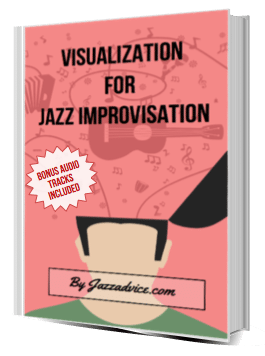
You’ll be much more successful at creating a solo if you begin with a map of the progression in your mind. With the chord structures and musical lines you know ingrained in at a deep level.
A few minutes of visualization exercises can mean the difference between struggling to make the chord changes and feeling the musical freedom to play what you hear.
#9) Take a simple pattern around the cycle
Chord progressions move by quickly…
In the heat of the moment, you don’t have time to think about chord tones, the tempo in a tune won’t slow down to wait for you to catch up.
Incorporating some simple patterns into your warm-up is a quick and easy way to develop this skill.
Start by taking a basic scale pattern and playing it through every key – moving by half-step, through the circle of 4ths or by any other interval that you choose.
Let’s say you start with the pattern 1235 in F:
Now play this pattern in every key, moving up in minor 3rds:
Not only have to know each scale and key, you have to be able to think of the root movement of the chord progression. You can change the pattern and chord qualities of this exercise depending on what you are practicing that day.
#10) Review the chord progression to a tune
Learning tunes and building a repertoire is something that every serious improviser should be doing.
Incorporating a tune into your warm-up is a great way to reinforce it in your mind and save time once you actually start practicing.
Let’s take a tune like Lady Bird. Start by listening to the tune…
As you do, visualize each chord and progression.
Aim to see a map of the tune in your mind and hear the relationship between the chords. Once you can do that, play the root of each chord on your instrument, visualizing the chord in your mind as you go.
If this is easy, choose a different interval to play over the progression: the 3rd, 5th, major 7th. You can even visualize and play arpeggios or scale patterns.
The goal of this warm-up is to have the progression and chord relationships of the tune ingrained before you try to improvise over it.
Be prepared to play a great solo…
Don’t just walk into the practice room or jump into a solo and expect magic to happen right away.
Set yourself up for success by getting your mind and body ready for the process of improvisation.
Remember, you don’t have to do the same warm-up everyday. One day start with a few ear training exercises, another practice a line you’ve transcribed, and on a rough day get focused again with a few minutes of meditation. Now you have 10 great options to choose from.
If you approach a solo with the progression in your mind, the chords in your ear, and language and technique under your fingers you will be much more successful than jumping into a solo cold.
You practice consistently to prepare for a successful performance, so why not warm-up to ensure a successful practice session?
